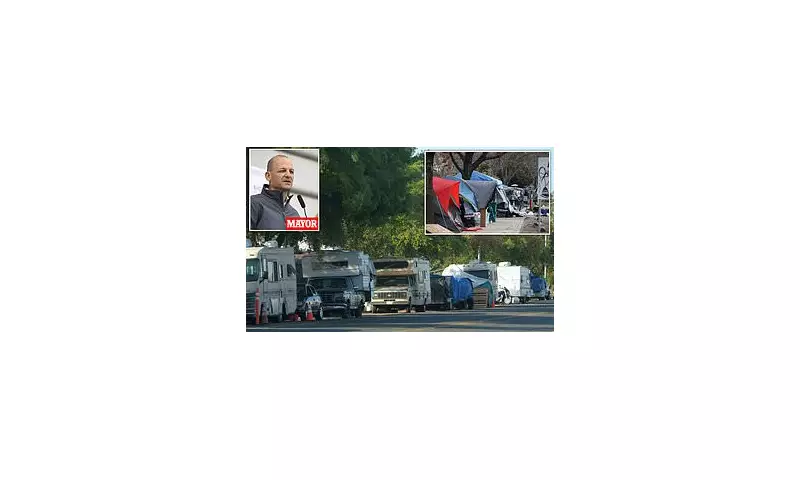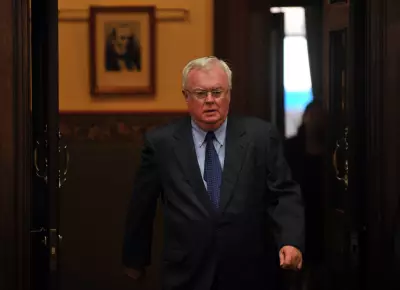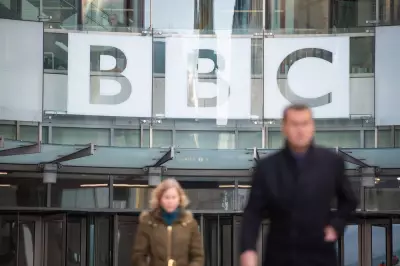
Ambitious Plans Meet Bureaucratic Reality
Sacramento's determined efforts to combat its severe homelessness crisis have encountered yet another significant setback, this time from federal authorities who condemned a proposed safe parking scheme as "reprehensible" and "dystopian." The city's ongoing struggle to implement effective solutions continues despite multiple mayoral administrations pledging action since 2018.
According to the most recent Homelessness Point-In-Time Count by Sacramento Steps Forward, the city currently has 6,615 homeless individuals, with approximately 60% remaining unsheltered as of 2024. This persistent problem has prompted various temporary housing measures, though implementation has consistently fallen short of promises.
Failed Initiatives and Federal Intervention
The latest casualty in Sacramento's homelessness strategy involves a proposed safe parking lot at the Franklin Light Rail Station in south Sacramento. The plan would have reserved roughly 20% of the station's parking area for 60 to 80 registered vehicles used as temporary housing, complete with 24-hour security, portable restrooms, and shower facilities.
However, the Federal Transit Administration delivered a stunning rebuke, refusing approval and describing the concept as "ridiculous." A spokesperson from the US Department of Transportation criticised California Governor Gavin Newsom for designating "commuter parking as a homeless encampment" rather than addressing underlying cost-of-living issues.
Councilmember Caity Maple acknowledged the need for strategic changes, lamenting that "the project was politicised," while Sacramento County Board supervisor Patrick Kennedy noted the challenging position created by the federal government's "outlandish language."
A Pattern of Partial Implementation
Sacramento's homelessness initiatives have consistently struggled with full execution. Since 2019, the city proposed at least 20 safe parking sites, but only three opened, with none remaining operational. One notable failure occurred in 2021 when a city-owned garage site closed within two months after a homeless man started a fire causing approximately $500,000 in damages.
Another expensive misstep saw the city spend $617,000 to pave and fence a North Sacramento location, only to abandon the project due to disagreements between local officials and the Central Valley Regional Water Quality Control Board regarding vehicle capacity. This site eventually became Camp Resolution, a self-governing encampment primarily housing disabled seniors that closed in August 2024.
Former Mayor Darrell Steinberg's 2018 pledge to build 1,000 tiny homes has similarly underdelivered. Seven years later, the city offers just 111 tiny homes across two shelters, though current Mayor Kevin McCarty continues advocating for additional sites.
Community Resistance and Measured Progress
Local opposition remains a consistent challenge, with NIMBYism (Not In My Backyard sentiments) frequently derailing proposals. Community meetings often feature residents expressing concerns about safety and neighbourhood impact. One resident captured prevailing anxieties by questioning how challenges would be addressed, noting that issues "bleed out into neighbouring communities" without proper services.
Despite these obstacles, Sacramento's persistent efforts show some positive results. The total homeless population decreased by 29% since 2022's record high of 9,278 people. The number of unsheltered individuals dropped even more significantly by 41% over the same period, falling from 6,664 to 3,944.
Nevertheless, the city's approach continues to face scrutiny from multiple directions—federal authorities, local agencies, and residents—creating a complex web of challenges that no single solution has yet untangled. The recent federal rejection underscores the difficulty Sacramento faces in balancing immediate humanitarian needs with long-term, sustainable solutions to its homelessness crisis.





